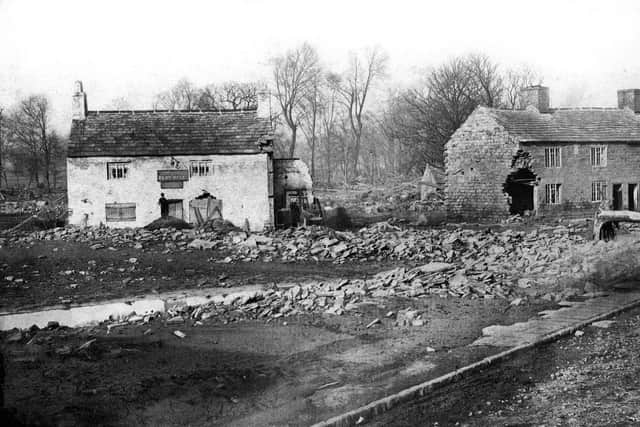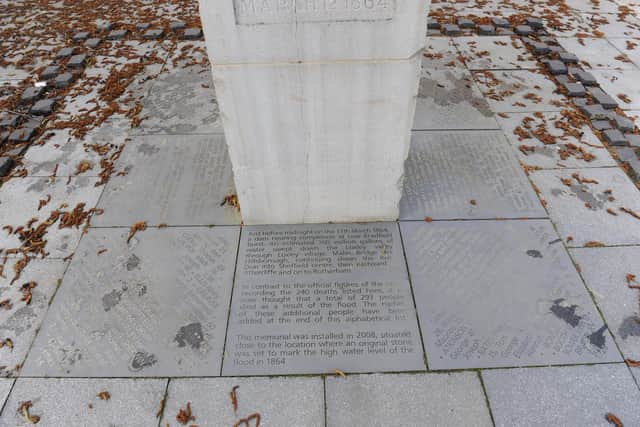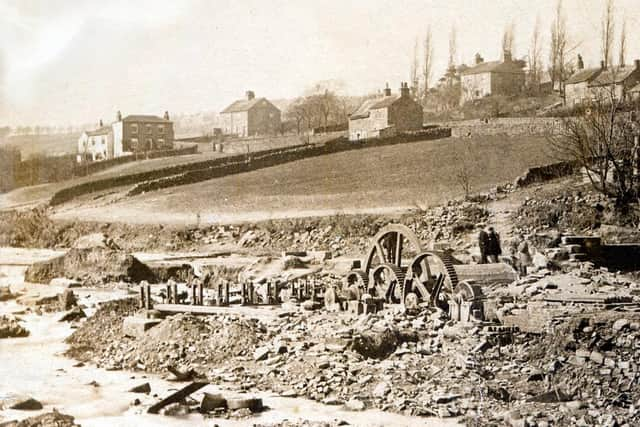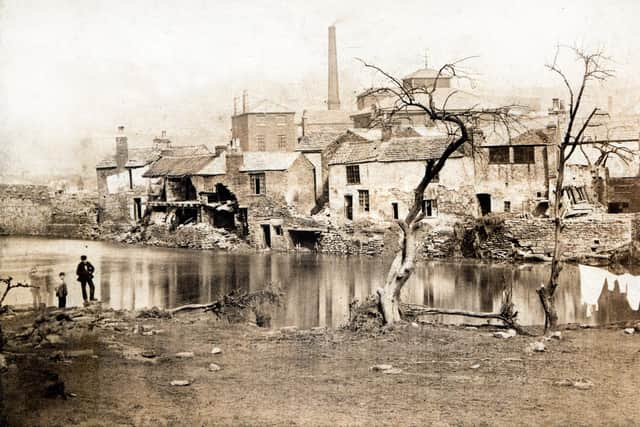Great Sheffield Flood: Event at memorial will mark disaster that hit city in 1864
and live on Freeview channel 276
Local historian Ron Clayton has invited people to join him at noon on Friday, March 11 to lay flowers at the Great Sheffield Flood memorial at Millsands outside the UKBA Office Vulcan House.
Flowers will be laid at 12.30pm on the memorial to those Sheffielders of all ages who lost their lives as a result of the disaster.
Advertisement
Hide AdAdvertisement
Hide AdThe newly-built Dale Dyke Reservoir at High Bradfield was the starting point of the Sheffield Flood, when on the night of Friday, March 11, 1864 a crack in the side of the embankment gave way.


As journalist Samuel Harrison described in his 1864 book, A Complete History of the Great Flood at Sheffield: “An overwhelming flood swept down from an enormous reservoir at Bradfield, carrying away houses, mills, bridges, and manufactories, destroying property variously estimated at from half a million to two millions sterling in value, and causing the loss of about two hundred and fifty human lives."
Describing the scene the morning after the disaster, he wrote: "How changed is now the aspect of the valley! There is the reservoir, which last night was nearly full; but now it is almost empty, and in the embankment is a great chasm, as though an earthquake had parted it asunder.
“Rocks and trees are torn up; houses have utterly disappeared; roads are swept away and impassable; bridges have vanished; and the works of industry have been "blotted out and rased as completely as though they had never had any existence."
Around 240 people lost their lives in the disaster.


Advertisement
Hide AdAdvertisement
Hide AdThe dam at Bradfield burst at around midnight under the strain of 690 million gallons of water, flooding the Loxley Valley then racing on through Hillsborough and beyond.
‘Eleven members of one family in Malin Bridge alone died’
Hundreds of houses, businesses and livelihoods were devastated by the raging torrent that swept via the River Don towards Sheffield city centre and out to Rotherham via Attercliffe.
The settlements of Bradfield, Owlerton, Loxley and Malin Bridge had all but disappeared under water.


Eleven members of one family in Malin Bridge alone died in the tragedy.
Advertisement
Hide AdAdvertisement
Hide AdAnd one man’s body was reported to have been found 18 miles downstream from his home.
Fifteen bridges crumbled under the force of the deluge and 700 animals were killed.


The privately-owned Sheffield Waterworks Company had built the dam to provide the city with drinking water and so was liable to give out compensation to more than 6,500 claimants.
A relief fund of £400 to support the homeless was set up by the Mayor of Sheffield, Thomas Jessop, who also appealed for public donations.
Advertisement
Hide AdAdvertisement
Hide AdThis bumped up the fund to £42,000. Among those who contributed was Queen Victoria, who sent a personal donation of £200.
The dam was rebuilt on a smaller scale in 1875, and today a flood memorial stone marks the site of the original dam wall.
Sheffield writer Mick Drewry’s 2014 book Inundation gives an excellent account of the flood and its aftermath.
